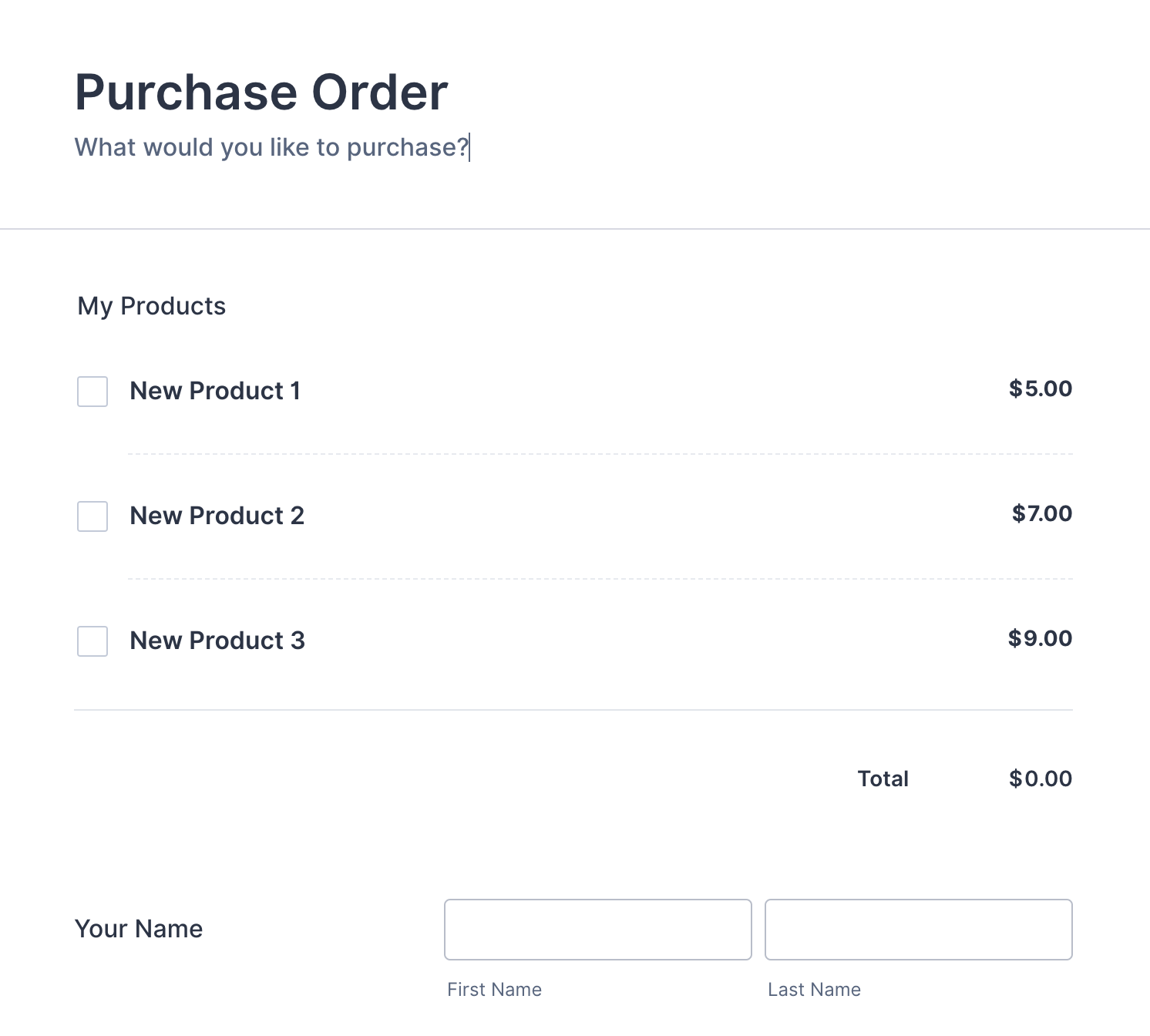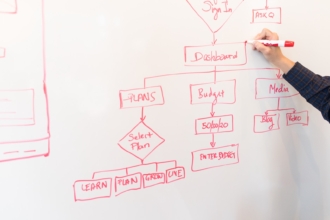At its core, every company is a carefully built series of interlocking parts that come in all shapes and sizes.
Sometimes, a small business is made up of one person working out of a garage and managing inventory, sales, and shipping with the goal of expanding reach. On the opposite end, a massive multinational conglomerate employs thousands and oversees multiple supply chains and business operations.
Regardless of the size — or how many interlocking parts are working at once — your company always needs steady and consistent workflows to accomplish its many tasks. A workflow is the sequence of processes necessary to complete a task, from initiation to completion. It’s getting things done and, ideally, done well.
When executed correctly, an effective workflow streamlines your decision-making and approval processes, weeding out inefficiencies in your business. You can’t underestimate the power of workflow effectiveness, particularly with repetitive, systematic, or administrative tasks.
The results of a study commissioned by the software company Automation Anywhere showed that digital administrative tasks eat up 2.9 hours of an employee’s day. Where there’s a lack of workflow management and automation, waste sucks up valuable time that would be better used on growth or creative tasks.
The same study found that a vast majority (87 percent) of office workers wish their employers would take steps to automate these repetitive tasks.
As we see how the capabilities of automation and artificial intelligence improve productivity and employees’ lives, we’ll continue to see increasing demand for functional workflow design — and it’s up to business decision-makers and leaders to make it happen.
As you map out your company’s workflows, keep a few practices in mind. By following these best practices, you’ll be able to build a well-attuned workflow that eliminates unnecessary burdens on your employees and frees up your business to be more productive — and ultimately more successful.
1. Identify the need
A workflow can cover a number of business processes, each with a specific function and purpose. As you approach your workflow design, the first step is identifying why you need it. Like any journey, it starts at the beginning.
When we talk about workflow design, we’re talking about visualizing a specific process. The first step is structuring your process, starting with a clear opening and closing. By identifying the need, you’ll pinpoint both the first and the last steps, breaking down the solution that accomplishes your goal.
Let’s explore a common situation — building a workflow to automate the creation, approval, and delivery of invoices to customers. The minutiae between points A and B with this example are pretty straightforward, but it’s important to establish the endpoints of your workflow to give it a foundation.
Here’s the need you identify right away: “My client needs to receive X items or services, while I need them to pay in full and on time.” Extract either end of your workflow from that description.
First, you need decision-makers to approve purchase orders from customers. This step requires tools to facilitate purchase order approvals from managers. On the closing end of this workflow is the need to send an invoice to the customer and confirm you’ve received full payment. By simply stating the needs your workflow should address, you’ve established a framework.
You can now consider these two points the bookends of your process. As we adjust the additional facets of your workflow, these two elements will keep you focused and aware of what needs to go into the underlying processes.
2. Prioritize key steps
With the ends of your workflow design in place, it’s time to fill the space in the middle. As you flesh out your process, always keep in mind the essential elements first to prioritize key steps.
Too often, superfluous processes overburden a workflow.
The principle coined by 19th century Italian economist Vilfredo Pareto, known as the 80/20 rule or, sometimes more dramatically, the law of the vital few, defines the necessity of prioritization in corporate enterprise. It states that 80 percent of results come from only 20 percent of causes — highlighting an imbalance in efforts and showing how imperative prioritization is.
This 80/20 mentality holds true in the workflows that alleviate your administrative processes. The more you lean into the portions of the process that move all of your work forward, the more easily you’ll identify how to improve each step and the overall workflow.
In the invoice example, think of the most important steps in getting from the first point to completion. Once you’ve received a purchase order and kicked off the workflow, try to visualize where the key decision-makers need to provide input to complete the process.
After receiving a purchase order, you need to get approval from an account manager familiar with the customer’s purchase needs as well as from an inventory manager who can confirm there are enough products to fulfill the order.
Subsequently, someone in a similar role on the opposite side of the transaction approves the payment with your finance department, which brings us to our closing phase — confirming receipt of the funds.
Depending on the intricacies of your business, you may have more decision-makers and approval processes in this workflow. But as you can see, the breakdown of the prioritized steps gives your workflow a shape you can build on.
Once you’ve determined the most important people involved in completing a process, you have the basics hammered out. You can add from there.
3. Automate processes
A workflow is only doing its job if it’s making work easier — and not just for you but for each decision-maker involved. When designing your workflow, it’s paramount to automate as many manual processes as you can to increase speed and decrease the possibility of errors. Automation elevates your workflow from a good, helpful organizational structure to a friction-eliminating machine.
One way to automate processes is to use online forms for approvals.
For example, Jotform Approvals has a user-friendly drag-and-drop workflow builder that allows you to use conditional logic and automated notifications within each process to design your workflow. You can arrange forms — such as purchase orders, sales orders, and invoices — within the process, assigning approvals for each to specific managers.
Jotform also includes several payment processing integrations you can add to forms, simplifying payment for your customers. Other integrations allow you to record the payment in your database.
By automating these approvals, you design a more smoothly operating workflow to help your team complete more tasks in less time.
4. Make it modular
As you evolve and change your business, and your revenue grows, you’ll probably need to change your workflows as well.
Rather than weighing yourself down with an overly rigid workflow design, give yourself a break down the road. Make your workflow modular and fluid so it can adapt to your growing business.
Integrating adaptability into all facets of your business is enormously important — from administrative tasks to processes as complex as how your HR team manages interoffice requests.
Especially in an environment that gives workers autonomy, your employees will be grateful for more flexibility in workflows so they’re versatile enough to address ever-changing needs.
A report from consulting firm Deloitte found that only 36 percent of workers who felt their workplace made their responsibilities clear had trouble adjusting to their assignments post-COVID-19 — compared to 51 percent for those workplaces that did not.
If you follow these steps, you’ll likely create a workflow that covers your overall process but is malleable enough for you to add different elements and chains of approval as needed.
As you evolve your workflow design and incorporate more people into it, you can modify your forms and add branches to your approval templates to automate the ever-growing workflow.
In a more complex version of the invoice example, a growing business may involve more stakeholders in the workflow. You could have inventory counters, factory managers, and other supply chain workers involved in each step. If you maintain a fairly pliable workflow from start to finish, it should be easy to add critical decision-makers to the flow.
5. Don’t overcomplicate it
We’ve talked a lot about the deliberate steps needed to flesh out your workflow design and what needs to happen within an effective process. Yet throughout the creation of these workflows, it’s just as important to consider what you shouldn’t do so that you avoid mistakes. In essence, avoid overcomplicating your workflow design as much as possible.
As mentioned, your growing business will include additional stakeholders in your workflow design. However, a bigger workflow isn’t an open invitation for a tidal wave of new decision-makers to have their say in every little step. Limit exactly who needs to know about what, and you’ll prevent the headache of a clogged funnel.
To revisit the invoicing example, the number of people involved could grow to include other members of the supply chain who have key knowledge of what your customer is purchasing and other elements of the transaction, such as discounts and promotions.
At the same time, you should be able to delegate tasks to lower rungs of the ladder (depending on the importance of the order) so you can actually remove higher-level managers from the workflow. If every detail of administration had to go through these bigger decision-makers, your processes would grind to a halt.
On the other end, don’t be heavy-handed about your workflow design being linear. Though we talk about “approval automation,” there will certainly be times when you reject a purchase order from a customer and send it to customer service employees to handle.
For instance, that might not need a higher-level manager initially, but if lower-level employees have a hard time dealing with the customer — or if an order is complicated — you may have to ask managers for their approval.
Avoiding a linear system and visualizing your workflow as a fluid, circuitous system gives you a level of flexibility that makes your business more receptive to change — which is always a good goal.
Designing a workflow doesn’t happen all at once, nor is your workflow set in stone once you’ve completed it. But by practicing the techniques listed in this article, you and your team will be more productive and attentive to the needs of your business and customers.












Send Comment: